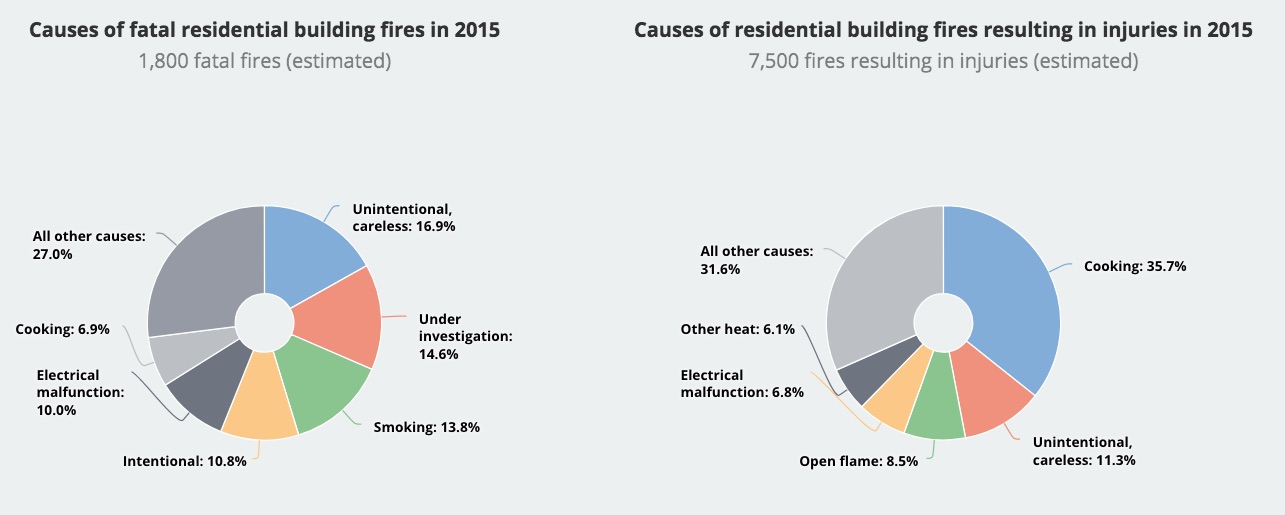The Sub Burndown
Saturday December 26, 2015
Section 1
- The Sub Fire -
Firefighter Injury Rates
Firefighting is often conceived of by civilians as a heroic, brave occupation. While this is not untrue, in a significant number of cases, in cities across the nation, there are fire departments causing a great deal of harm to society, through tailing ambulances to and from non-fire emergency incidents, even committing arson in order to keep themselves and their government funding afloat.
The National Fire Protection Association reported that from their 2014 National Fire Experience Survey that Overall, the number of injuries at non-fire emergencies increased 34.2 percent between 1981 and 2014, from 9,600 to 14,595. During the same period, the number of non-fire emergencies also increased 292.5 percent, due in large part to an increase in the number of fire department responses to medical emergencies.
In 2013, CalWatchDog published an article citing national statistics that suggested firefighting in today's modern times to be one of the nation's safest jobs
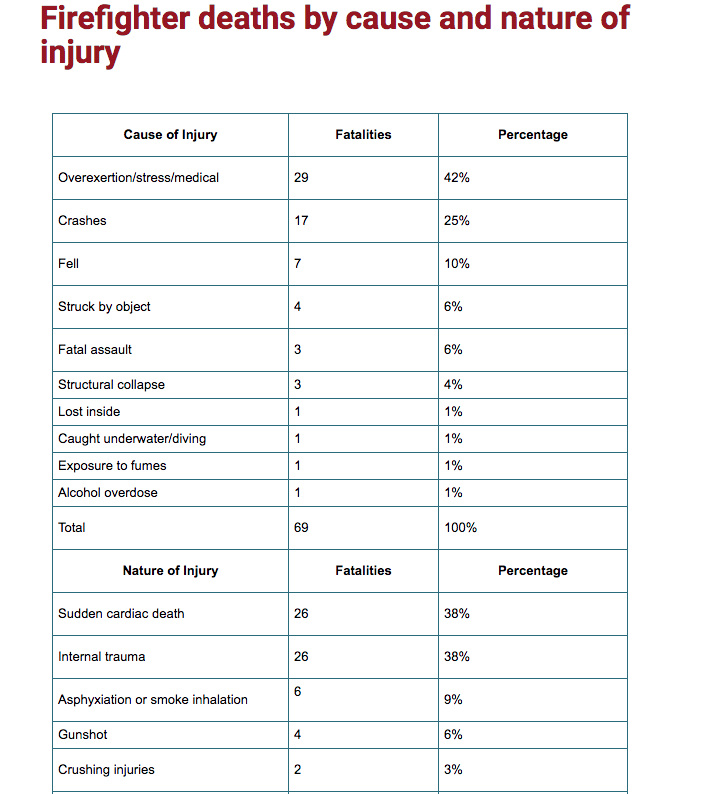

Above: Deaths by Cause and Nature of Injury
SOURCE: https://www.nfpa.org/News-and-Research/.../Firefighter-deaths-by-cause-and-nature-of-injury
Section 2
- Square Deal Recordings & Supplies (SDRS) Fire -
Section 3
- San Luis Obispo City Fire Department (SLO City FD) Issues -
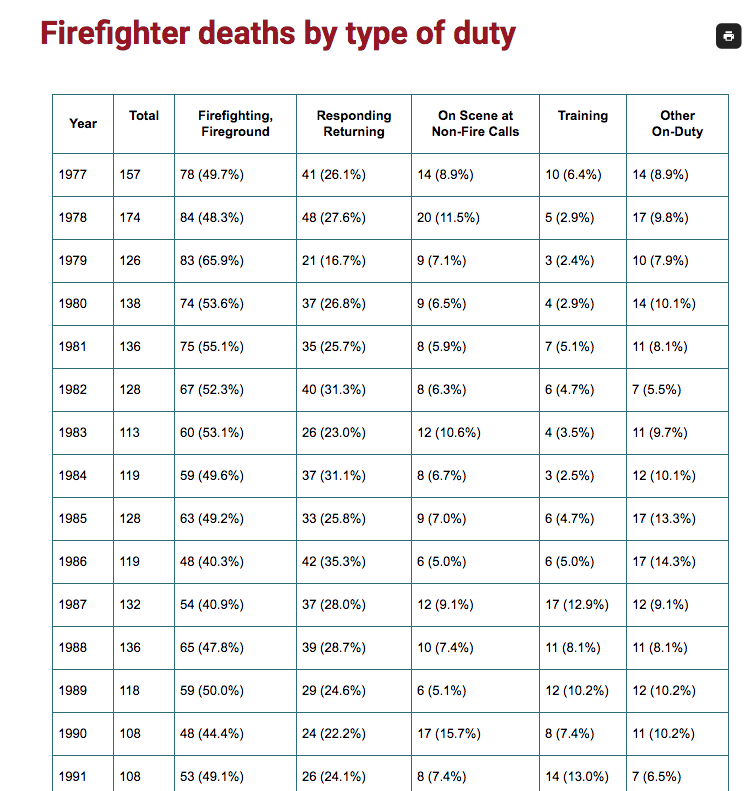

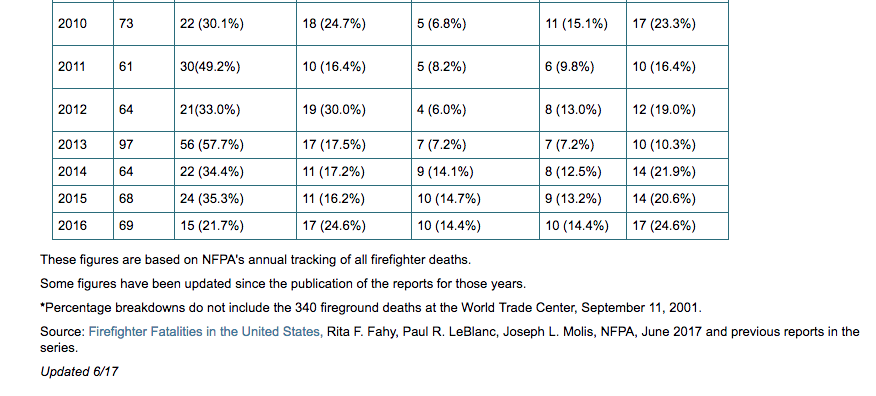
Above: Deaths by Type of Duty
SOURCE: https://www.nfpa.org/News-and-Research/.../Firefighter-deaths-by-type-of-duty
FEMA: Firefighter Deaths
Data from FEMA in 2016 showed that 23 firefighters died while off-duty, 89 while on duty, from various causes.
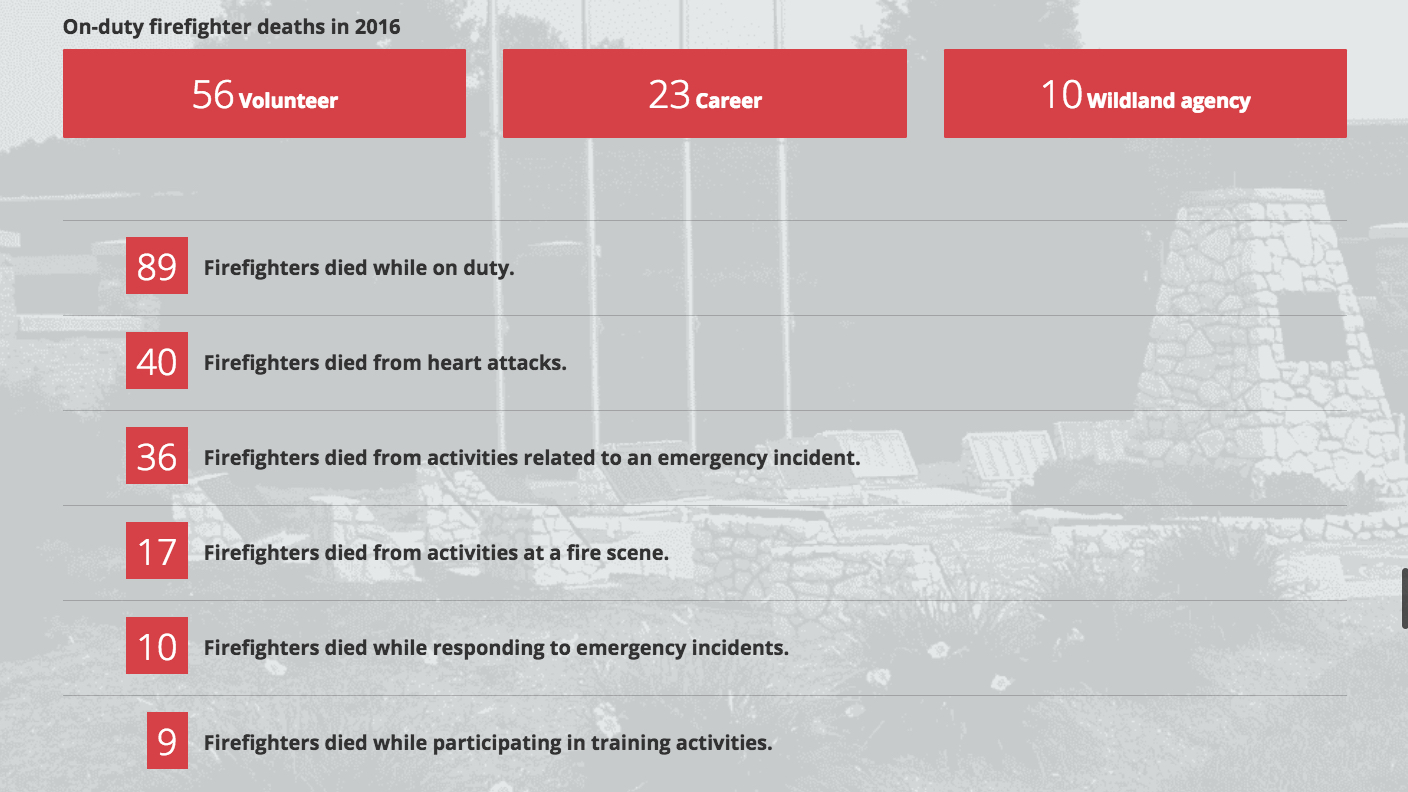
Above: Firefighter deaths reported by the National Fire Incident System.
SOURCE: https://www.usfa.fema.gov/data/statistics/
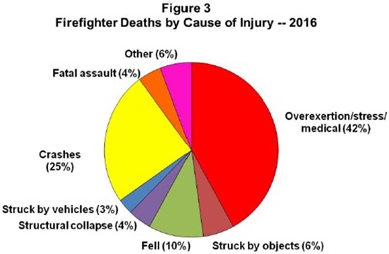
"Smoke and Mirrors" (Slate Group News)
In 2002, the U.S. Department of Labor and Bureau of Labor Statistics routinely publishes figures on the "civilian occupations with high fatal injury counts". Civilian, in this case, includes police and fire services while excluding military. The list is typically recognized as the "most dangerous jobs" in America. Year after year, firefighters are nowhere to be found on that list.
…firefighting doesn't make the Department of Labor's 2002 list of the 10 most dangerous jobs in America. Loggers top that one, followed by commercial fishermen in the No. 2 spot, and general-aviation commercial pilots (crop dusters and the like) at No. 3. Firefighting trails truck-driving (No. 10) in its risks. Pizza delivery drivers (No. 5) have more dangerous jobs than firefighters, statistically speaking. And fatalities, when they occur in firefighting, often are due to heart attacks and other lack-of-fitness problems, not fire.
http://www.slate.com/articles/news_and_politics/hey_wait_a_minute/2003/10/smoke_and_mirrors.html
SOURCE: "The Bureau of Labor Statistics collects nationwide information on work-related fatal injuries in its Census of Fatal Occupational Injuries (CFOI) which was conducted for the first time in 1992. Each work-related fatal injury is identified, verified, and profiled using multiple source documents; these diverse data sources include death certificates, workers' compensation records, and reports to federal and state agencies. Cross-referencing these documents provides detailed information about each work related fatality including worker characteristics, equipment involved, circumstances of the event, and details of the injury. The detailed data are then aggregated and used to promote safety efforts by employers, employees, and others."
Section 4
- Comments, Observations and Correction on Narratives by SLO City FD -
- Section 1 - The Sub Fire:
- 6 Minutes With The Arsonist
- Full Fire Investigation Never Done - Arson Investigation Refused
- Clearing The Building - Checking to Make Sure No One is Inside
- No R.I.T. or F.A.S.T. Crew Assigned
- The Sub Fire Load & Interior Details
- The Sub Roof Details
- Seven Path to Enter & Fight the Fire at The Sub
- Intentionally Assisting In Burning a Building Down is Not Firefighting
- UID #2 on Top of The Sub Roof Corner A/B
- See How the Fire Moved Through the Structures
- Section 2: Square Deal Recordings & Supplies Fire:
- The Sub Office Proves Fire Did Not Come Into The Front Of Square Deal Recordings & Supplies From The Sub Through The Firewall Between The Two Businesses
- Unknown Incendiary Device Number Three
- SDRS Fire Load Notes
- 11 Basic Stop Points for Preventing Fire Spread into SDRS from Rear
- Hole Map Illustration
- Section 3: San Luis Obispo City Fire Department (SLO City FD) Issues:
- SLOFD Fire Calls 2009-2016
- SLOFD Press Release Corrections
- Bravest Act or a Cowardly, Evil Act?
- Is BC-1 Berryman An Arsonist?
- Total Destruction is a Job Well Done
- SLOFD Fails to Follow Its Own Rules
- SLOFD Underground "Burndown" Policy
- Is SLO City FD a Corrupt Fire Department?
- How Can You Believe A Fire Department Would Help Burn A Building Rather Than Save It?
- Official CityGate Report Shows Major Fire Department Problems that City Leadership Continues to Ignore
- They Train For What They Actually Do, BURN Things Down Fast and Efficiently
- Is SLO City FD a Corrupt Fire Department?
- Letter From City Manager Derek Johnson - June 12, 2018
- Letter To City Manager Derek Johnson - July 26, 2018
- Letter From City Manager Derek Johnson - August 13, 2018
- Letter To City Manager Derek Johnson - August 17, 2018
- Letter To City Manager Derek Johnson - August 17, 2018 (#2)
- SLO City FD Actual Firefighter Strategy
- Official CityGate Report Shows Major Fire Department Problems that City Leadership Continues to Ignore
- They Train For What They Actually Do, BURN Things Down Fast and Efficiently
- Section 4: Comments, Observations, and Corrections to Narratives of SLOFD:
- SLO City Fire Department Continues to Fail Our City
- Narrative: Battalion Chief Neal Berryman
- Narrative: Deputy Chief Jeff Gater
- Narrative: Chief Garret Olson
- Narrative: Captain Michael King
- Narrative: Captain Mark Vasquez
- Narrative: Captain Matt Callahan
- Narrative: Captain Paramedic Station 3A David Marshall
- Section 5: Case Studies (Pattern of Conduct):
- Section 6: SLOFD Firefighter Narratives
- Section 7: SLOFD Fire Investigation Report
- Section 8: Arson Investigator /Expert Letters
- Section 9: Firefighting Info:
- Section 10: Original Unedited Video Material
- Section 11: Original Photographs and Images
- Cesar's Photos
- Ethan B.'s Photos
- Drones Images
- "Katie's Friend"s Photos
- Neighbor's Photos
- Jim M.'s Video
- Jimmy T.'s Video
- John I.'s Witness Videos
- KCOY Photos
- Logan C.'s Photos
- Michael H.'s Photos
- Nicole and Kjerstin's Photos
- Shar's Photos
- "PRR"'s Photos
- Sara S.'s Photos and Videos
- Final Report Videos
- Section 12: Actual Firefighting Action
- Section 13: What Real Ventilation Training Looks Like
